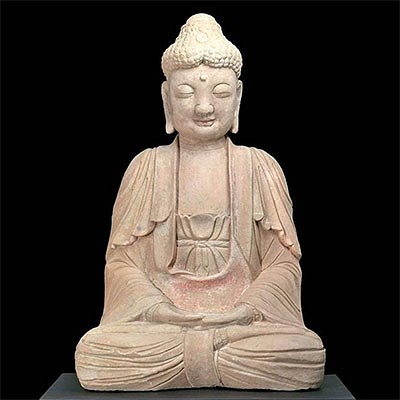Huge Olmec Jade Celt w/ Incised Maize God, ex Marcus
Lot 103
About Seller
Artemis Fine Arts
686 S Taylor Ave, Ste 106
Louisville, CO 80027
United States
Selling antiquities, ancient and ethnographic art online since 1993, Artemis Gallery specializes in Classical Antiquities (Egyptian, Greek, Roman, Near Eastern), Asian, Pre-Columbian, African / Tribal / Oceanographic art. Our extensive inventory includes pottery, stone, metal, wood, glass and textil...Read more
Estimate:
$18,000 - $25,000
Absentee vs Live bid
Two ways to bid:
- Leave a max absentee bid and the platform will bid on your behalf up to your maximum bid during the live auction.
- Bid live during the auction and your bids will be submitted real-time to the auctioneer.
Bid Increments
| Price | Bid Increment |
|---|---|
| $0 | $25 |
| $300 | $50 |
| $1,000 | $100 |
| $2,000 | $250 |
| $5,000 | $500 |
| $10,000 | $1,000 |
| $20,000 | $2,500 |
| $50,000 | $5,000 |
| $100,000 | $10,000 |
| $200,000 | $20,000 |
About Auction
By Artemis Fine Arts
Feb 18, 2021
Set Reminder
2021-02-18 10:00:00
2021-02-18 10:00:00
America/New_York
Bidsquare
Bidsquare : Exceptional Antiquities, Asian, Ethnographic
https://www.bidsquare.com/auctions/artemis-gallery/exceptional-antiquities-asian-ethnographic-6373
Museum-worthy examples of Egyptian, Greek, Roman, Etruscan, Near Eastern, Far East / Asian, Pre-Columbian, African / Tribal, Oceanic, Native American, Spanish Colonial, Russian, Fossils, Ancient Jewelry, Fine Art, so much more! Artemis Fine Arts info@artemisgallery.com
Museum-worthy examples of Egyptian, Greek, Roman, Etruscan, Near Eastern, Far East / Asian, Pre-Columbian, African / Tribal, Oceanic, Native American, Spanish Colonial, Russian, Fossils, Ancient Jewelry, Fine Art, so much more! Artemis Fine Arts info@artemisgallery.com
- Lot Description
Pre-Columbian, Southern Mexico to Guatemala, Olmec, ca. 900 to 500 BCE. An incredibly large and quite striking ceremonial jade celt (axe), skillfully hand-carved from blue-green jade and finely incised on the front face with profile imagery of the Olmec maize god, identifiable via the tripartite headdress, with additional glyphoid visages below. The jade was meticulously flaked and then sanded smooth to a reflective sheen, resulting in a tool with an elegant, tapering body presenting a rounded handle and a broad upper section with an acutely-angled edge. A highly-stylized ritual form for ceremonial and/or funerary purposes, this Olmec jade celt exemplifies the arduous technique of ancient stone-shaping as well as Olmec's artistry with its finely incised imagery. Size: 13.75" H (34.9 cm); 14.2" H (36.1 cm) on included custom stand.
The Maize God's face is associated with a snarling jaguar form that also possesses anthropomorphic features. Notice also that the artisan deliberately rendered the maize sprouting from the top of the head in the form of the hand axe itself, which scholars believe also represented the ear of corn.
Celts were associated with ears of corn, the V-shape being associated with the husk from which the cob emerged. At La Venta (a coastal city near present day Tabasco), caches of celts were discovered planted vertically like miniature stelae. The blunt end of this celt would suggest a similar use, and when placed in a vertical position its appearance is much more dramatic. In this stance the celt served to define the central axis mundi and the corners of the four-sided world, regarded as a cosmic maize field.
Research in the late 1990s and early 2000s pinpointed the source of what is colloquially referred to as "Olmec blue" jade in the lowland Motagua River near the modern-day border of Guatemala and Honduras; stone from this source was carved and traded widely throughout early Mesoamerica. The value of jade for ancient people lay in its symbolic power: perhaps its color was associated with water and vegetation; later, the Maya would place jade beads in the mouths of the dead. Many scholars have argued that the demand for jade contributed to the rise of long-distance trading networks and to the rise of urban centers in ancient Mesoamerica. This jade celt would have been regarded as an exceedingly valuable and rare piece of ceremonial art.
See another Olmec jade celt incised with Maize God imagery at the Metropolitan Museum of Art (Accession Number 1978.412.5)
Provenance: ex-Barakat Gallery, Beverly Hills, California, USA, acquired prior to 2000; ex-Stanley Marcus collection, Los Angeles, California, USA, acquired in 1976
All items legal to buy/sell under U.S. Statute covering cultural patrimony Code 2600, CHAPTER 14, and are guaranteed to be as described or your money back.
A Certificate of Authenticity will accompany all winning bids.
We ship worldwide and handle all shipping in-house for your convenience.
#153788Imagery is fabulous; red pigment was added later to highlight the iconography. Celt has stable pressure fissures as shown; these are NOT indicative of repairs and the form is generally excellent.Condition
- Shipping Info
-
All shipping is handled in-house for your convenience. Your invoice from Artemis Gallery will include shipping calculation instructions. If in doubt, please inquire BEFORE bidding for estimated shipping costs for individual items.
-
- Buyer's Premium



 EUR
EUR CAD
CAD AUD
AUD GBP
GBP MXN
MXN HKD
HKD CNY
CNY MYR
MYR SEK
SEK SGD
SGD CHF
CHF THB
THB












